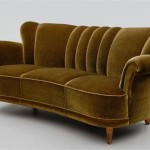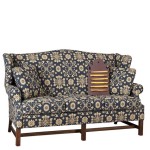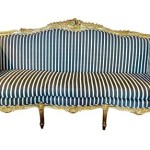Leather Dye Kit For Sofa: Revitalizing Your Furniture
A leather sofa is a significant investment, adding both comfort and aesthetic appeal to a living space. However, over time, leather can fade, become scratched, or suffer from color transfer, diminishing its original beauty. A leather dye kit for sofas offers a cost-effective and practical solution for restoring and revitalizing damaged or faded leather, allowing homeowners to extend the lifespan of their furniture without the expense of replacement.
This article will explore the various components of a typical leather dye kit for sofas, the types of leather suitable for dyeing, the application process, and essential considerations for achieving professional-looking results. It will also discuss the benefits of using a leather dye kit as opposed to other restoration methods and address common issues users may encounter.
Understanding the Components of a Leather Dye Kit
A comprehensive leather dye kit for sofas typically includes several essential components designed to prepare, dye, and protect the leather. Each component plays a crucial role in the overall success of the dyeing process.
Leather Cleaner: This is the first step in any leather dyeing project. The cleaner removes dirt, oils, and surface contaminants that can inhibit dye penetration. It often contains mild degreasers and gentle surfactants to lift away ingrained grime without damaging the leather’s surface. The use of a specialized leather cleaner is preferable to household cleaners, which may contain chemicals that can dry out or discolor the leather.
Leather Preparer/Deglazer: This product is designed to remove the existing finish or topcoat on the leather. This is a critical step because most leather sofas have a protective layer that prevents the dye from properly adhering to the leather fibers. The preparer gently dissolves this finish, creating a receptive surface for the dye. It is vital to follow the manufacturer's instructions carefully when using a preparer, as excessive application can damage the leather.
Leather Dye: The dye itself is the core component of the kit. Leather dyes are typically available in liquid or gel form and are formulated to penetrate and bond with the leather fibers. High-quality leather dyes are colorfast, resistant to fading, and designed to maintain the leather's natural flexibility. Dyes come in a wide range of colors, allowing for precise color matching or the creation of a completely new look. Understanding the type of dye (aniline, semi-aniline, pigmented) is crucial for selecting the appropriate product for the specific type of leather.
Leather Conditioner: After dyeing, the leather can become dry or stiff. A leather conditioner replenishes the natural oils and moisture, restoring the leather's suppleness and preventing cracking. Conditioners typically contain emollients and humectants that penetrate the leather pores, keeping it hydrated and flexible. Regular conditioning is essential for maintaining the longevity and appearance of a dyed leather sofa.
Leather Sealer/Finisher: The sealer or finisher provides a protective layer over the dyed leather, shielding it from scratches, stains, and UV damage. This layer also helps to lock in the dye, preventing it from transferring onto clothing or other surfaces. Sealers are available in various finishes, such as matte, satin, or gloss, allowing users to customize the final appearance of the sofa. The choice of finish depends on personal preference and the desired level of sheen.
Applicators: Kits typically include a variety of applicators, such as sponges, cloths, and brushes, for applying the cleaner, preparer, dye, conditioner, and sealer. The type of applicator used can affect the final result. Sponges are generally used for applying the cleaner and conditioner, while cloths are used for wiping away excess product. Brushes are often used for applying the dye, especially in intricate areas or for achieving a more even coverage.
Identifying Suitable Leather Types for Dyeing
Not all types of leather are equally suitable for dyeing. The success of a leather dyeing project depends largely on the type of leather used in the sofa's construction. Understanding the different types of leather will help users select the appropriate dye and application techniques.
Aniline Leather: This is the most natural type of leather, characterized by its soft texture and visible grain. Aniline leather is dyed with soluble dyes that penetrate the leather without covering the surface. Because aniline leather retains its natural characteristics, it is highly absorbent and responsive to dyeing. However, aniline leather is also more susceptible to staining and fading, making it a good candidate for restoration with a dye kit.
Semi-Aniline Leather: This type of leather is similar to aniline leather but has a thin protective coating applied to the surface. This coating provides some resistance to staining and fading while still allowing the natural grain to be visible. Semi-aniline leather can be dyed, but the protective coating must be removed with a leather preparer before applying the dye. This ensures proper dye penetration and adhesion.
Pigmented Leather: This is the most common type of leather used in furniture manufacturing. Pigmented leather has a thick, opaque coating applied to the surface, which provides excellent durability and stain resistance. However, this coating also makes it more difficult to dye. To successfully dye pigmented leather, the existing finish must be completely removed with a strong leather preparer. The dye will then adhere to the exposed leather fibers, but the final result may not be as natural-looking as with aniline or semi-aniline leather.
Bonded Leather: This is not true leather but rather a manufactured material made from shredded leather scraps that are bonded together with adhesives. Bonded leather is not suitable for dyeing because it does not have the same absorbent properties as genuine leather. Attempting to dye bonded leather will likely result in an uneven and unsatisfactory finish.
Suede and Nubuck: These types of leather have a soft, velvety surface created by buffing the grain side of the leather. Suede and nubuck can be dyed, but the process is different from dyeing smooth leather. Specialized dyes and application techniques are required to maintain the texture and appearance of these materials.
Detailed Application Process and Key Considerations
The application process for dyeing a leather sofa involves several steps that must be followed carefully to achieve a professional-looking result. Proper preparation, application, and finishing are essential for ensuring the dye adheres properly and the leather retains its suppleness and durability.
Preparation: Start by thoroughly cleaning the sofa with a leather cleaner to remove any dirt, oils, or surface contaminants. Use a soft cloth or sponge to apply the cleaner, working it into the leather in a circular motion. Wipe away any excess cleaner with a clean, damp cloth. Allow the leather to dry completely before proceeding to the next step. After cleaning, apply the leather preparer/deglazer. This removes the existing finish and opens the leather pores for better dye absorption. Follow the manufacturer's instructions carefully and apply the preparer evenly, using a sponge or cloth. Allow the preparer to dwell on the surface for the recommended time, then wipe away any residue.
Dye Application: Before applying the dye, test it on an inconspicuous area of the sofa to ensure the color is correct and the dye adheres properly. Protect surrounding surfaces with drop cloths or masking tape to prevent accidental staining. Apply the dye in thin, even coats, using a sponge, cloth, or brush. Work the dye into the leather using a circular motion, paying attention to seams and crevices. Allow each coat of dye to dry completely before applying the next coat. Multiple thin coats are preferable to one thick coat, as this will result in a more even and natural-looking finish. Typically, two to three coats of dye are required to achieve the desired color intensity.
Conditioning and Sealing: After the dye has dried completely, apply a leather conditioner to replenish the natural oils and moisture. Use a soft cloth or sponge to apply the conditioner evenly, working it into the leather pores. Allow the conditioner to soak in for the recommended time, then wipe away any excess with a clean cloth. Finally, apply a leather sealer/finisher to protect the dyed leather from scratches, stains, and UV damage. Apply the sealer in thin, even coats, using a sponge or cloth. Allow each coat of sealer to dry completely before applying the next coat. The number of coats required will depend on the desired level of protection and the type of sealer used. Allow the sealer to fully cure before using the sofa.
Key Considerations: Proper ventilation is crucial when working with leather dyes and preparers, as these products may contain volatile organic compounds (VOCs). Work in a well-ventilated area or wear a respirator to avoid inhaling harmful fumes. Always wear gloves to protect your hands from staining and irritation. When matching colors, it is best to start with a lighter shade and gradually add more dye until the desired color is achieved. It is more difficult to lighten a color than to darken it. Pay attention to the direction of the leather grain when applying the dye. Applying the dye in the same direction as the grain will result in a more even and natural-looking finish. Avoid over-saturating the leather with dye, as this can cause it to become stiff or cracked. Use a heat gun or hairdryer on a low setting to speed up the drying process between coats of dye, conditioner, and sealer. However, be careful not to overheat the leather, which can cause it to shrink or become damaged. Regularly clean and condition the dyed leather sofa. This will help to maintain its appearance and prolong its lifespan.
By carefully following these steps and considerations, homeowners can successfully dye their leather sofas and restore them to their former glory. A leather dye kit for sofas provides a cost-effective and practical solution for revitalizing worn or faded furniture, allowing users to enjoy their investment for many years to come.

Leather Repair Kits That Actually Work And Last For Years Vinyl Automotive Aircraft Marine Usa Worldwide

Fortivo Dark Brown Leather Recoloring Balm Repair Kits For Couches Usedr Car Seat Boots Couch Kit Dye Com

Dark Brown Mahogany Leather Dye Finish Rub N Re Furniture Couch Repair Paint

Leather Repair Kit Color Cleaner Rer Sponge Applicator Vinyl Dye Taupe Com

Sofa Leather Dye Kit For Aniline

Leather Repair Kit Color Cleaner Rer Sponge Applicator Vinyl Dye White Com

Leather Restoration Tips Revive Aging Honey

Nadamoo Leather Recolouring Balm Light Brown 225g 8 Oz Repa The Warehouse Liquidation

Carbusonic Leather Sofa Dye Kit Car Interior Colour

Sofa Repair Kit Leather Dye Full Colour Change Paint Colourant Large








